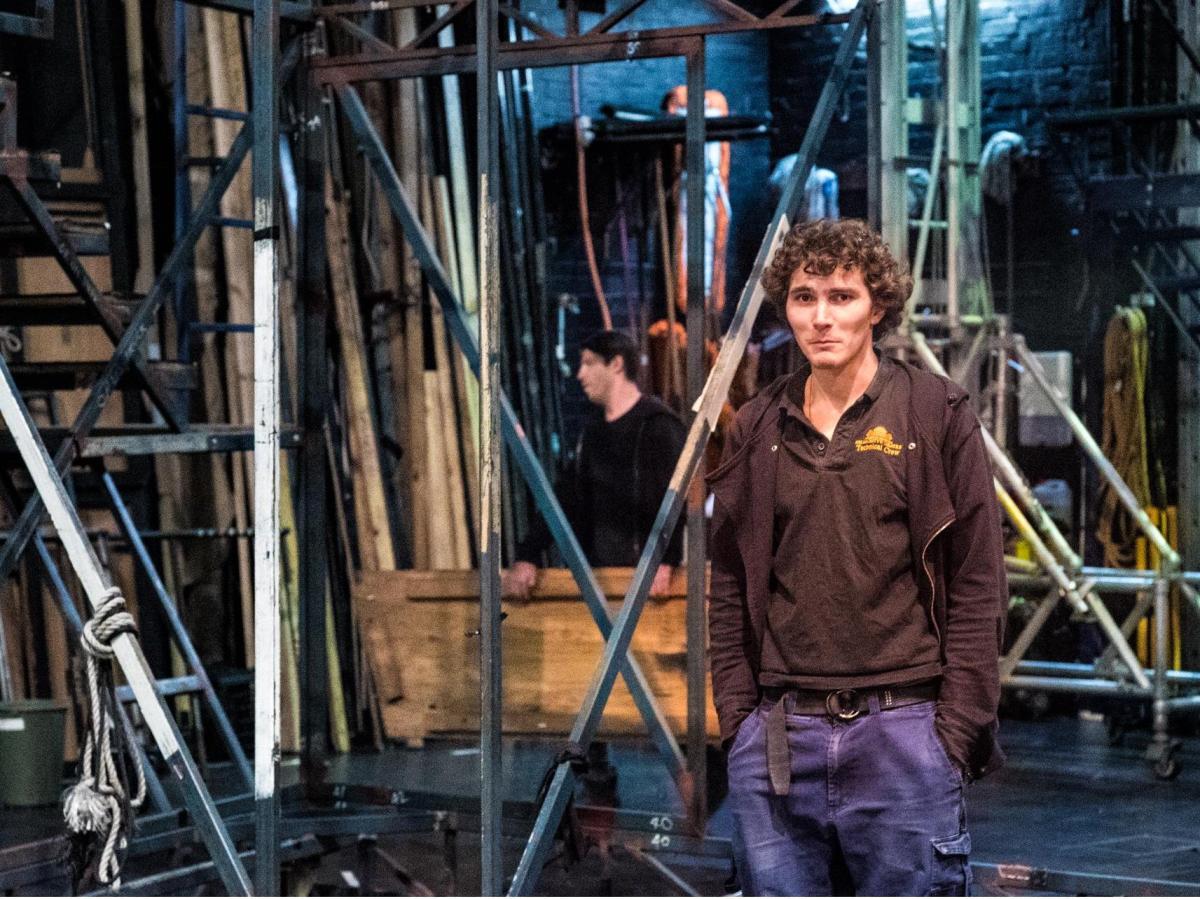One of the most humbling aspects of working in the performing arts is seeing how a project grows in people as it does with vision. The calibre of human expertise required to execute a production can be immense, with the vast array of experiences within that team being equally as impressive. If the artistic vision calls for a piano to fly through the air, an oversized puppet to pick up a small child, or a proscenium arch to crumble around an audience you can guarantee that there exists a person with the necessary skills to execute that vision – and it probably wouldn’t be their first time in doing so.
The acknowledgement here is that Technical Production is a necessary component in the realisation of artistic productions, from the very large to large-at-heart. There is of course a noble argument as to the purity of the artistic form that, stripped bare, reveals the true qualitative heart that lies within the performing arts. Ideally technical production should never subtract from a productions artistic integrity. If it does, the problem may not necessarily lie with production.
It’s likely that without a developed technical production component the high-profile operas, ballets, musicals and concerts of today would find it difficult to justify their significant price-of-entry. The technical production arms race serves to continuously alter the value proposition of the performing arts for audiences. We expect a certain production value as audiences; an expectation usually aligned to ticket price. How would you feel if one year you payed $100 to see Coldplay accompanied by all their production glitz and glamour, performing to a sold out arena of 25,000 people, when the next year you paid the same amount to see Chris Martin stand on stage for two hours playing his acoustic guitar to that same crowd? Hopefully you’d sympathize with the social media manager.
Throsby (1990) demonstrated an intrinsic link between the technical factors of a production and the audience’s perceived quality of it. The argument that scaling back technical production to reduce ticket prices doesn’t hold up well economically or operationally, as Nugent (1999) discussed in her inquiry of the major performing arts companies. In fact, Feist (1997) suggests that productions that have the capability to demand extravagant ticket prices may indeed be undercharging, suggesting that the relationship to technical production is the inverse of what we may expect – technical production becomes a means of meeting an audience’s qualitative expectations of the ticket price, rather than a result of it – an enabler, as opposed to a cause.
If we appreciate that technical production is a necessary component of the performing arts then how do we integrate it effectively? Consider an adage you may be familiar with (modified for context):
Artists without Technicians are naked people standing in the dark trying to emote. Technicians without artists are…at the pub.
The ‘truth’ behind the humour may reveal an underlying attitude of the technical dynamic between the artistic and administrative components of the performing arts; simply put – that technical doesn’t care. A blunt, overly simplistic assessment that lacks nuance, but typifies the pervasive technical stereotype. Fruitful, healthy and respectful technical artistic relationships take years to blossom, which may be in part a result from a lack of trying. Technical are as much responsible for perpetuating this relationship as artistic are in failing to realise its qualities. In a context that demands a fiscally responsible and sustainable approach to production, a healthy technical artistic relationship is the key to being able to achieve a greater value for money and a more satisfying artistic result. The reality is that technical is the artist’s greatest ally – who else would put themselves through the trying circumstance of facilitating an artistic vision if there wasn’t an underlying appreciation of the product? It certainly couldn’t be motivated by money, fame or the sociable hours.
Technical want to be a part of the creative process because technical have a responsibility in realising it. Can technical hamper artistic vision? Absolutely. Can artistic visions be impossible and irresponsible? Absolutely. The means to manage such a challenging dichotomy of interests is through trust, respect and communication. Hewison, Holden & Jones (2010) showed us with the Royal Shakespeare Company that there is value in bringing a holistic approach to an arts organization’s primary product (i.e. the art), but that this required an open attitude from artistic and a respect for the invitation from the body. While perhaps a bridge too far for some, I would argue that technical should be the intrepid artist’s first port of call – precisely because technical hold the greatest potential to marry their practical experience in realising creative vision with their underlying respect of the artistic process. Technical can the artist’s best friend, but we share a responsibility in realising that.
–
Feist, A 1997, ‘Consumption in the Arts and Cultural Industries: Recent Trends in the UK’, in M Fitzgibbon & A Kelly (eds), From maestro to manager: critical issues in arts and culture management. Oak Tree Press, Dublin, pp. 245- 267
Hewison, R, Holden, J and Jones, S 2010, All together: a creative approach to organisational change. Demos, London.
Nugent, H 1999, Major Performing Arts Inquiry: Securing the future, Department of Communications, Information Technology and the Arts, Canberra.
Throsby, D 1990, ‘Perception of Quality in Demand for the Theatre’, Journal of cultural economics, vol. 14, no. 1, pp. 65-82.





